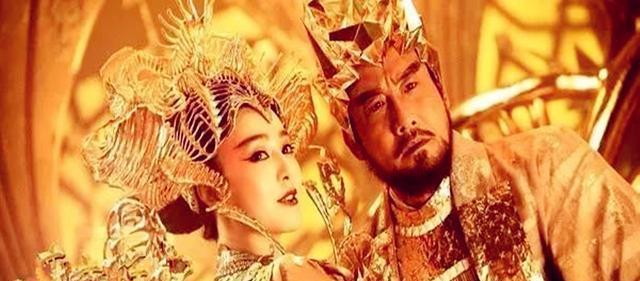When it comes to Anyang, Henan, many readers will think of the Yin Ruins, the capital of the late Shang Dynasty, which is not only an "important" physical evidence for the study of Chinese civilization and history, but also a "major" cultural heritage in the world.

(All pictures in this article, all from the network, thanks to the original author, if you infringe your rights, please contact the author of this number to delete.) The picture has nothing to do with the content, please do not enter the seat)
But what no one could have imagined was that in the summer of more than 80 years ago, archaeologists actually "randomly" dug out a "world's earliest library" with a shovel in the ruins of Yin Ruins, and at the same time exposed too many secrets of the Yin Shang era. The following Xiaobian will reveal the secret to you from the beginning:
In June 1936, Anyang ushered in the first high temperature of summer, but archaeologists did not delay the excavation and cleanup of the Yin Ruins because of the hot weather. At the time, experts were cleaning up ash pits on the southeast side, where residents stored or threw garbage, in today's terms, "garbage dumps."
Prior to this, archaeologists had cleared out more than 100 ash pits, but most of them had no major discoveries, only a small number of bronze and jade artifacts, as well as animal remains and so on. Just when the experts were feeling a little discouraged, an unexpected discovery shocked the world...
In the ash pit, numbered YH127, an expert wearing a sunshade straw hat and holding a small brush with a probe shovel, squatted on the ground carefully cleaning up each layer of humusous mud. After more than 2 hours of busyness, the ash pit was dug down more than 50 centimeters, but still nothing was found. The expert was also a little impetuous, he came to the ash pit "haphazardly" a shovel, did not expect to shovel out half of the oracle bone. He opened the half of the oracle bone and fixed his eyes on the bone hole, and the archaeologists were stunned, and there were all the oracle bones underneath, and the oracle bones were pressed one by one, neatly stacked inside the ash pit.
More than a dozen experts, after 3 days of cleaning, in this ash pit with a diameter of only 2 meters, a total of 170696 oracle bones were excavated, and many of them were well preserved, which is definitely the largest discovery since the archaeology of Xiaotun Village in Anyang. What's even more surprising is that these oracle bones are engraved with words, so the ash pit YH127 is also called "the world's earliest library".
In the years after the excavation, paleography experts conducted in-depth research and interpretation of these more than 10,000 oracle bones, and on top of these oracle bones, 7 secrets about the Yin Shang era were also discovered more than 3,000 years ago:
First: the content inscribed on the oracle bone is extremely extensive, including socio-economic and cultural folklore, etc., and even astronomical astrological signs and geographical features. From this, we can see that the knowledge of Yin merchants is far wider than we think.
Second: In addition to the words carved with hard objects, many of the words on the oracle bones are written in black ink. It can be seen that pigments and other writing instruments such as brushes have appeared in the Yin Shang period.
Third: In order to beautify the words engraved on the oracle bone, the Yin People will also fill in the engraving with ink, some red and some black, which are not only exquisite, but also easy to read, and also save a lot of effort for experts to identify.
Fourth: In the oracle bone's oracle bones, there are both auspicious omens and auspicious omens, which shows that the results of the fortune-telling of the Yin merchants are also mixed.
Fifth: The largest turtle bone was found to date, 44 cm long and 35 cm wide. After the identification of experts, it was confirmed that the oracle bone was a Malaysian turtle, which shows that the Yin merchants at that time may have carried out overseas trade.
Sixth: Of the more than 10,000 oracle bones, only 8 are cow bones, and the others are turtle bones. It can be inferred from this that when the Yin merchant stored the oracle bone, he should separate the cow bone and the turtle bone, which also reflected a kind of "high and low" idea.
Seventh: On some oracle bones, experts found that there were circular holes, and they were also extremely regular. Therefore, it can be speculated that the Yin merchants at that time would string the oracle bones into a book, which was convenient for storage and easy to read.
Yin Ruins is a veritable cultural treasure house, and its profound historical value is of great significance for exploring the origin and development of Chinese civilization. At the same time, as a key to interpreting yin ruins, the oracle bone also has immeasurable value. I hope that in the near future, experts will be able to fully interpret the mysteries in the yin ruins of the oracle bones, and show us more mysteries of the yin merchant culture that has been sealed for more than 3,000 years.
Wenlan Hairun Studio Editor-in-Chief Wen Xiucai, this article is written by: Special History Writer: Liu Lijiang's